
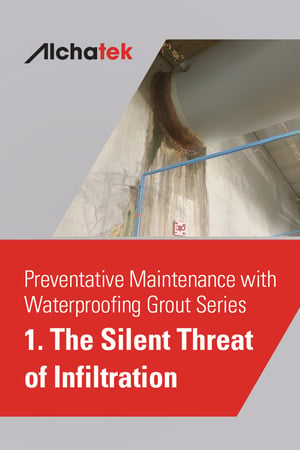 In the realm of property management and building maintenance, certain risks lurk unseen, often underestimated in their potential for destruction. Among these, water infiltration stands as a silent, insidious threat. Its capacity for causing extensive, sometimes catastrophic damage is not to be overlooked.
In the realm of property management and building maintenance, certain risks lurk unseen, often underestimated in their potential for destruction. Among these, water infiltration stands as a silent, insidious threat. Its capacity for causing extensive, sometimes catastrophic damage is not to be overlooked.
The Unseen Enemy: How Water Infiltration Works Against Structures
Water infiltration might not grab headlines like a fire or an earthquake, but its effects can be just as devastating over time. It usually starts small - a tiny crack here, a small leak there. Unnoticed or ignored, these minor issues can evolve into significant structural problems. Water seeps into the foundations, walls, and other critical parts of a building, gradually eroding the integrity of the structure. This process is slow, often going undetected until it's too late.
Real-World Consequences: The Champlain Towers South Collapse
A stark reminder of the catastrophic consequences of ignoring water damage is the tragic Champlain Towers South collapse in Surfside, Florida. While the final investigation report is yet to be fully conclusive, early findings pointed to long-term water damage as a significant contributing factor. This tragedy underscores the necessity of regular inspections and maintenance to detect and address water infiltration issues before they escalate into dire consequences.
Real-World Consequences: The Ann Street Parking Garage Collapse in Manhattan
Adding to the list of cautionary tales is the recent collapse of a parking garage building in the Financial District of Manhattan, New York City. On April 18, 2023, the second floor of the Ann Street Parking Garage partially collapsed onto the first floor, tragically claiming one life and injuring others. The garage, with a history of building violations dating back decades, including concrete defects and cracks, highlights the grim repercussions of neglecting maintenance and ignoring signs of structural weakness. This incident, leading to evacuations and a city-wide mandate for parking garage examinations, is yet another powerful example of the destructive potential of water infiltration and structural neglect.
Silent Yet Destructive: The Underlying Impact of Water Damage
Water damage isn't just about the immediate effects of a leak. Its impact is multifaceted, affecting everything from the building's structural integrity to the health of its occupants. Continuous water exposure can lead to the corrosion of steel reinforcements, the deterioration of concrete, and the growth of mold and mildew. These issues not only compromise the safety of the structure but also pose health risks, particularly in the form of respiratory problems caused by mold spores.
Why Prevention is Key
The most effective strategy against water infiltration is prevention. Regular maintenance and early detection are vital in mitigating the risks associated with water damage. Property owners and managers should prioritize regular inspections, looking out for signs of water damage like discoloration, mold growth, or pooling water. Early intervention can save not only significant repair costs but also lives.
Heeding the Silent Warning
The lesson here is clear: water infiltration, while silent and often unnoticed, is a formidable enemy against the longevity and safety of our structures. By understanding the potential dangers and committing to regular preventative maintenance, we can protect our buildings and, more importantly, the lives within them.




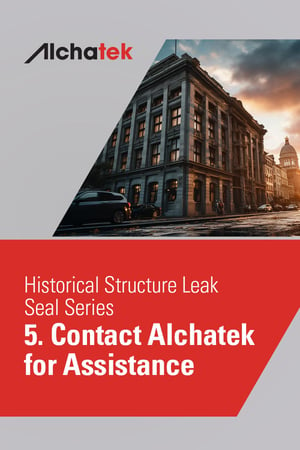 As we conclude our series on preserving historical buildings, the overriding message is clear: the importance of professional expertise in leak sealing cannot be overstated. Historical structures, with their unique architectural features and materials, demand a level of care and knowledge that goes beyond ordinary repair work. Professionals in this field bring not only the necessary technical skills but also an understanding of historical preservation principles, ensuring that repairs enhance rather than detract from the building's historical value.
As we conclude our series on preserving historical buildings, the overriding message is clear: the importance of professional expertise in leak sealing cannot be overstated. Historical structures, with their unique architectural features and materials, demand a level of care and knowledge that goes beyond ordinary repair work. Professionals in this field bring not only the necessary technical skills but also an understanding of historical preservation principles, ensuring that repairs enhance rather than detract from the building's historical value.
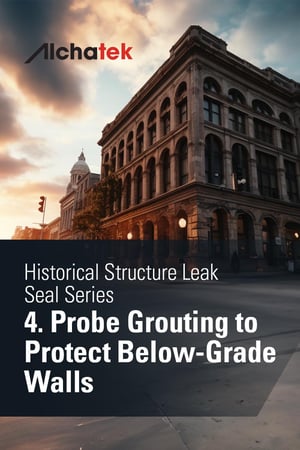 In the delicate task of preserving historical structures, probe grouting with polyurethane grout has emerged as a critical technique. Probe grouting involves injecting grout into the ground around a structure to seal leaks and fill voids next to the walls of below-grade areas. This method is uniquely beneficial for addressing sub-surface issues like water intrusion, without disturbing the structure itself or the interior surfaces.
In the delicate task of preserving historical structures, probe grouting with polyurethane grout has emerged as a critical technique. Probe grouting involves injecting grout into the ground around a structure to seal leaks and fill voids next to the walls of below-grade areas. This method is uniquely beneficial for addressing sub-surface issues like water intrusion, without disturbing the structure itself or the interior surfaces.
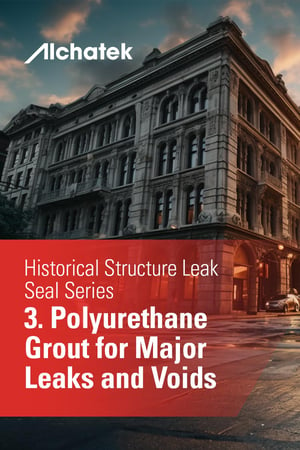 In the realm of historical building preservation, polyurethane grouts stand out as a vital tool for managing structural repairs, particularly in dealing with significant leaks and voids. Polyurethane grouts are injectable resins that react with water to expand and solidify, forming a sturdy, waterproof seal. This characteristic makes them especially suitable for repairing and reinforcing structures that have been compromised over time.
In the realm of historical building preservation, polyurethane grouts stand out as a vital tool for managing structural repairs, particularly in dealing with significant leaks and voids. Polyurethane grouts are injectable resins that react with water to expand and solidify, forming a sturdy, waterproof seal. This characteristic makes them especially suitable for repairing and reinforcing structures that have been compromised over time.
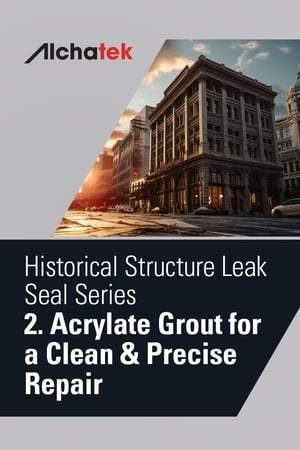 In the realm of historical structure preservation, acrylate grouts have become an essential tool. But what are they, precisely? Acrylate grouts are water-soluble resins that transform into a gel-like substance when mixed with specific catalysts. Renowned for their flexibility, strength, and compatibility with a broad range of building materials, these grouts are particularly suited to older buildings where traditional repair materials may fall short.
In the realm of historical structure preservation, acrylate grouts have become an essential tool. But what are they, precisely? Acrylate grouts are water-soluble resins that transform into a gel-like substance when mixed with specific catalysts. Renowned for their flexibility, strength, and compatibility with a broad range of building materials, these grouts are particularly suited to older buildings where traditional repair materials may fall short.
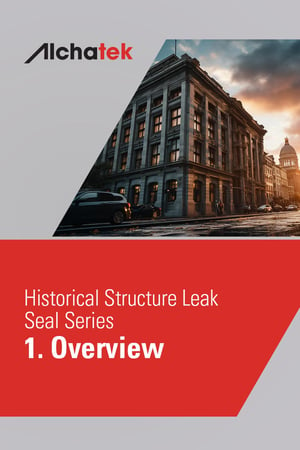 The preservation of architectural treasures is a paramount concern. These structures not only embody a rich history but also present unique challenges in maintenance and repair. One such challenge is effectively sealing leaks without compromising the building's aesthetic integrity or historical value. This series aims to provide an in-depth understanding of the advanced solutions available for this delicate task.
The preservation of architectural treasures is a paramount concern. These structures not only embody a rich history but also present unique challenges in maintenance and repair. One such challenge is effectively sealing leaks without compromising the building's aesthetic integrity or historical value. This series aims to provide an in-depth understanding of the advanced solutions available for this delicate task.
 As a municipal manager or administrator, you’re well aware of the challenges and solutions related to maintaining the structural integrity of infrastructure like bridge approach slabs. The numerous benefits of polyurethane foam, including its cost-effectiveness, quick application time, and long-term durability, make it a compelling choice for bridge approach slab leveling and stabilization.
As a municipal manager or administrator, you’re well aware of the challenges and solutions related to maintaining the structural integrity of infrastructure like bridge approach slabs. The numerous benefits of polyurethane foam, including its cost-effectiveness, quick application time, and long-term durability, make it a compelling choice for bridge approach slab leveling and stabilization.


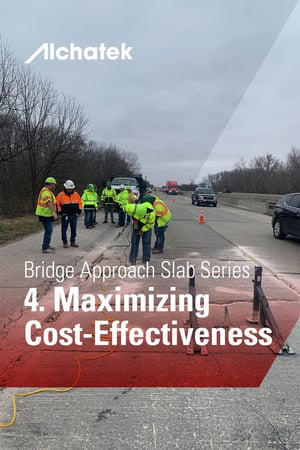 Budget constraints are a perennial concern for infrastructure maintenance operations. Whether it's the upkeep of roads, bridge approach slabs, or other critical components, there is an ever-present need to optimize spending without compromising quality. Administrators and engineers alike are continually searching for cost-effective, long-term solutions that deliver robust performance and minimize future maintenance costs.
Budget constraints are a perennial concern for infrastructure maintenance operations. Whether it's the upkeep of roads, bridge approach slabs, or other critical components, there is an ever-present need to optimize spending without compromising quality. Administrators and engineers alike are continually searching for cost-effective, long-term solutions that deliver robust performance and minimize future maintenance costs.
 One of the most pressing challenges in infrastructure maintenance is managing slab repairs on busy roadways, including bridge approach slabs, streets, and highways. These repairs often lead to unavoidable traffic disruptions, posing operational challenges that can significantly impact the daily commute and local economy. As a result, there's an increasing need for solutions that are not only effective in restoring structural integrity but also quick, thus minimizing the time lanes are closed.
One of the most pressing challenges in infrastructure maintenance is managing slab repairs on busy roadways, including bridge approach slabs, streets, and highways. These repairs often lead to unavoidable traffic disruptions, posing operational challenges that can significantly impact the daily commute and local economy. As a result, there's an increasing need for solutions that are not only effective in restoring structural integrity but also quick, thus minimizing the time lanes are closed.
 Structural integrity often takes center stage when discussing the engineering behind bridges, leaving the bridge approach slabs in the periphery. Yet, the approach slabs bear significant loads, channel them effectively into the bridge structure, and play a crucial role in maintaining the structural integrity of the entire bridge system. When these slabs sink or become uneven, the ripple effect goes beyond vehicle safety, impacting the structural equilibrium of adjoining infrastructure. Thus, maintaining their integrity becomes a multi-faceted endeavor.
Structural integrity often takes center stage when discussing the engineering behind bridges, leaving the bridge approach slabs in the periphery. Yet, the approach slabs bear significant loads, channel them effectively into the bridge structure, and play a crucial role in maintaining the structural integrity of the entire bridge system. When these slabs sink or become uneven, the ripple effect goes beyond vehicle safety, impacting the structural equilibrium of adjoining infrastructure. Thus, maintaining their integrity becomes a multi-faceted endeavor.